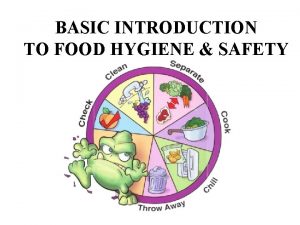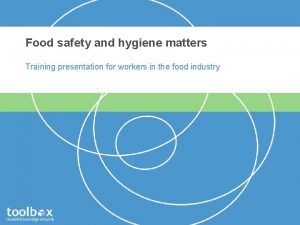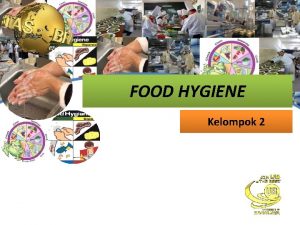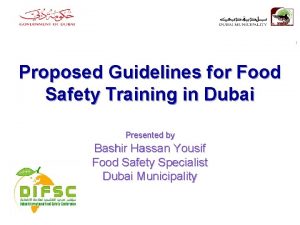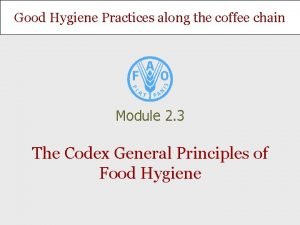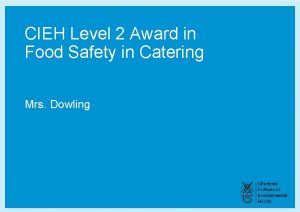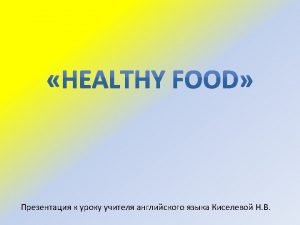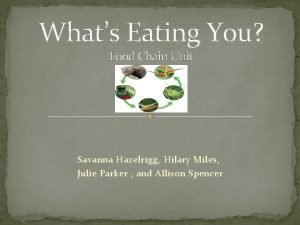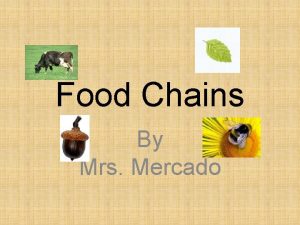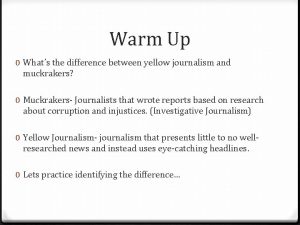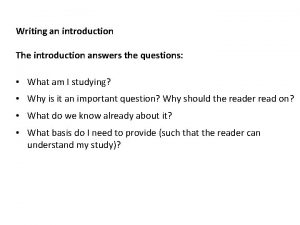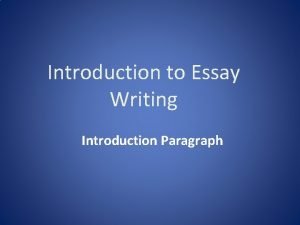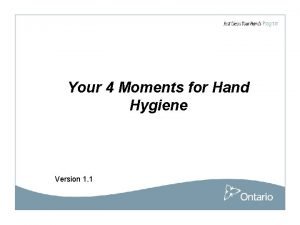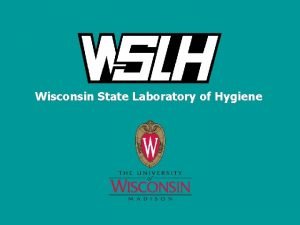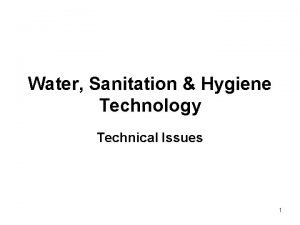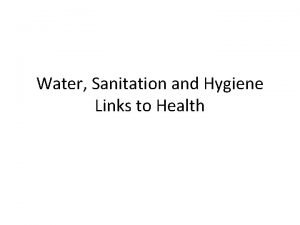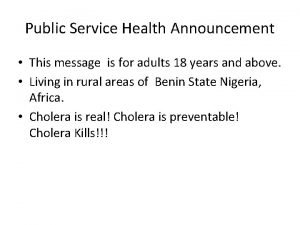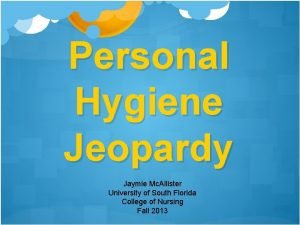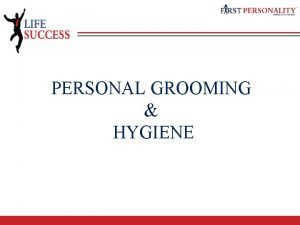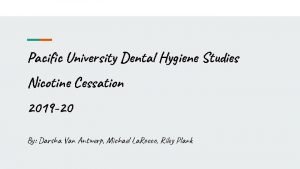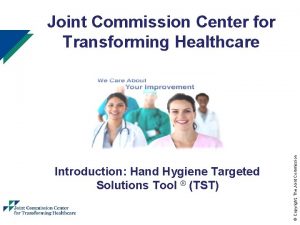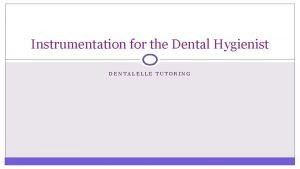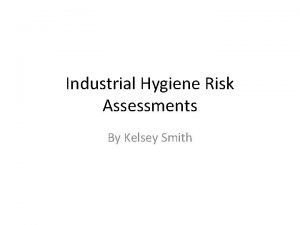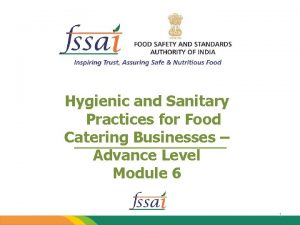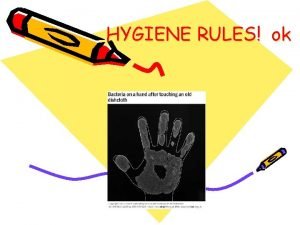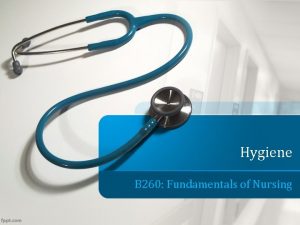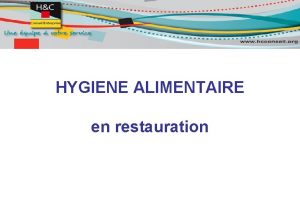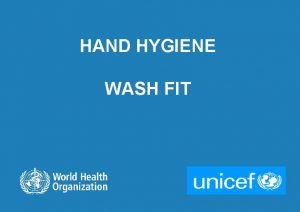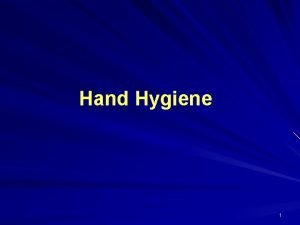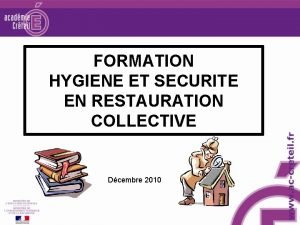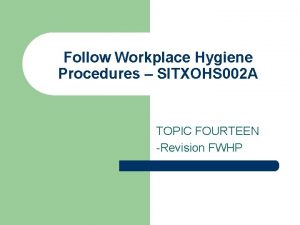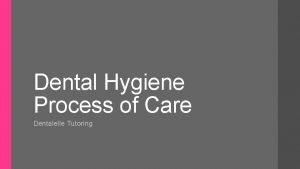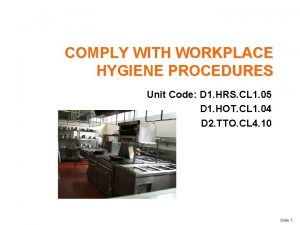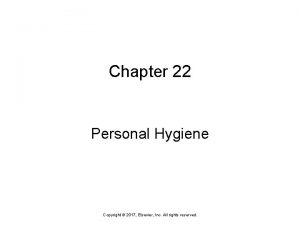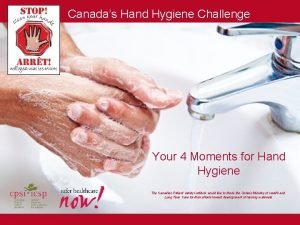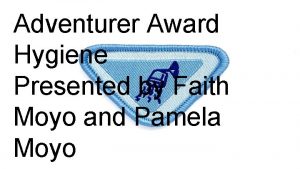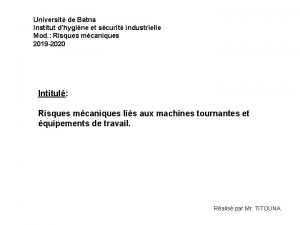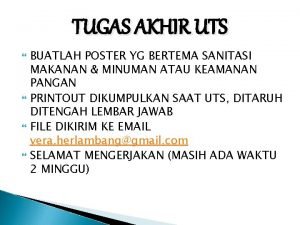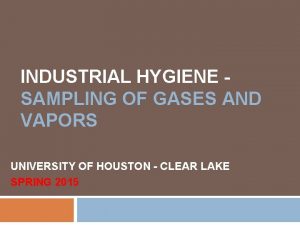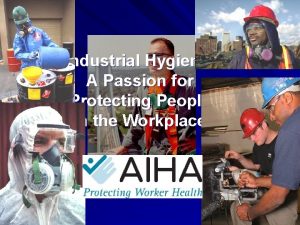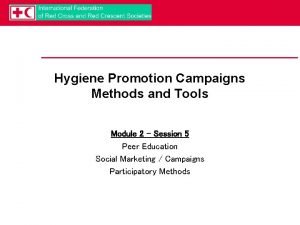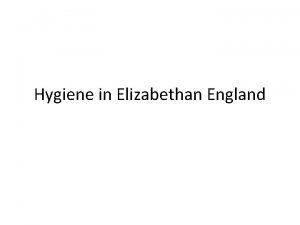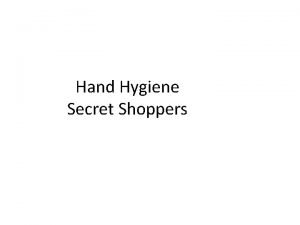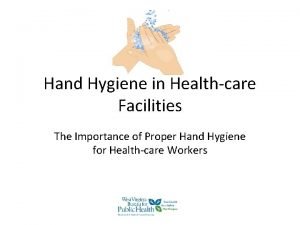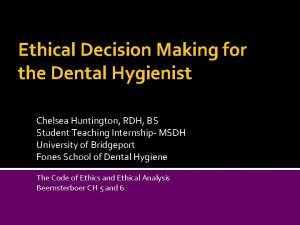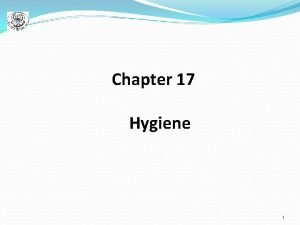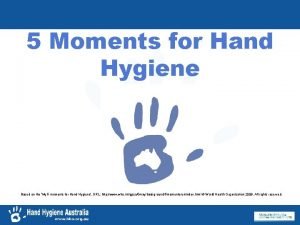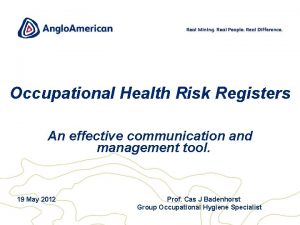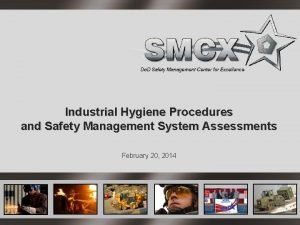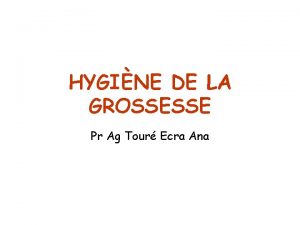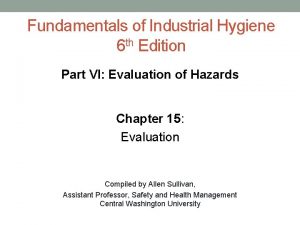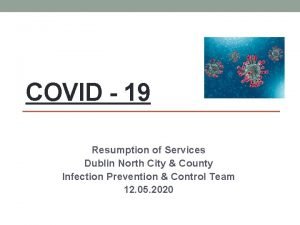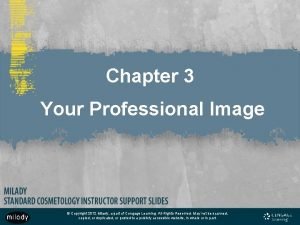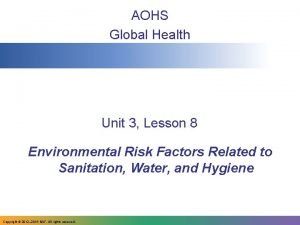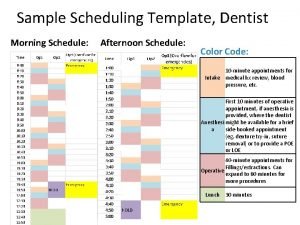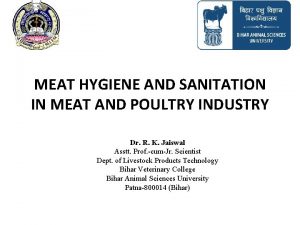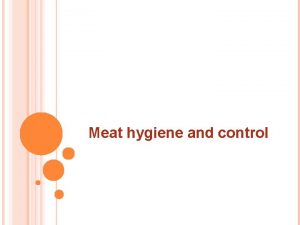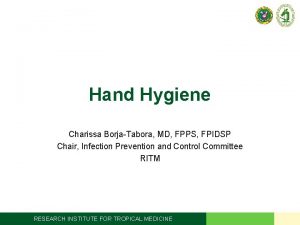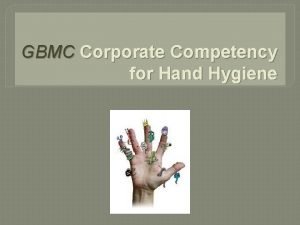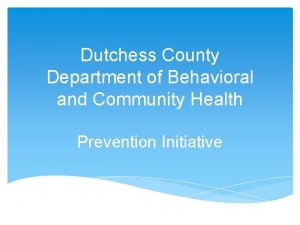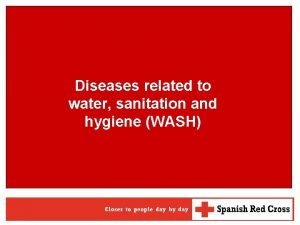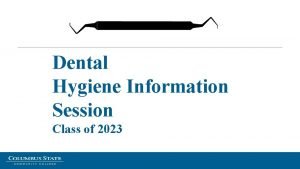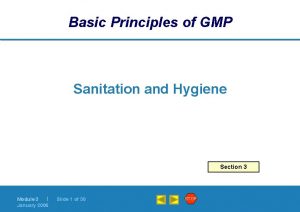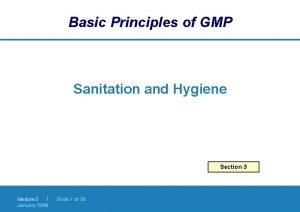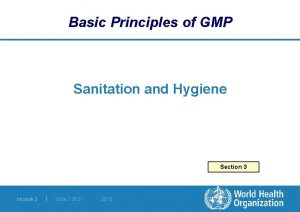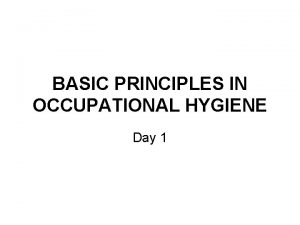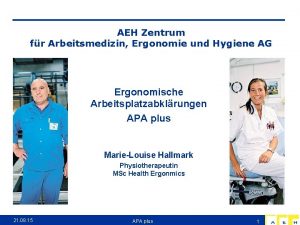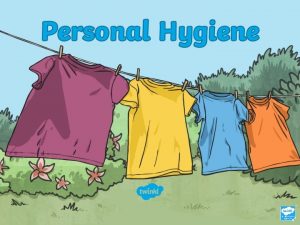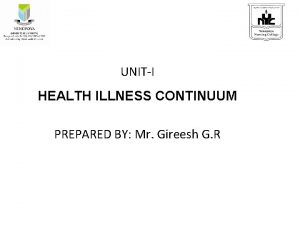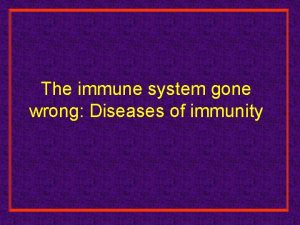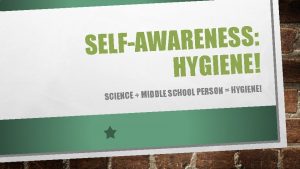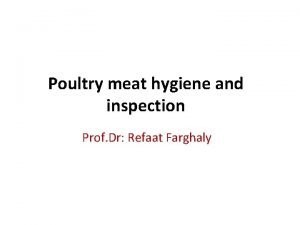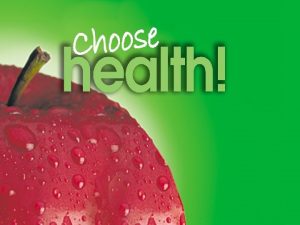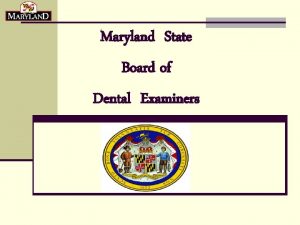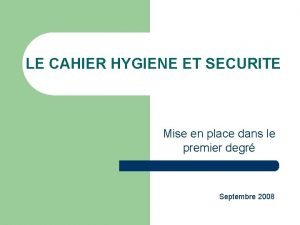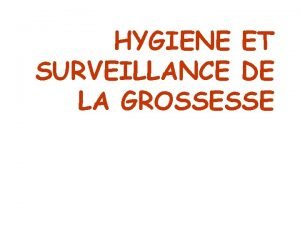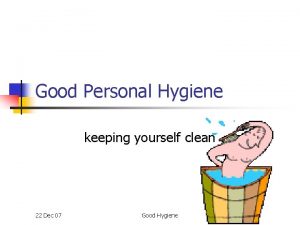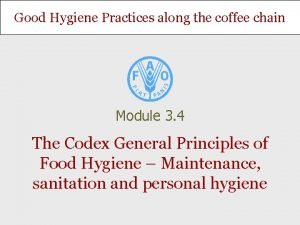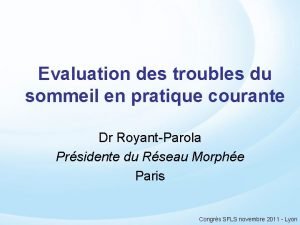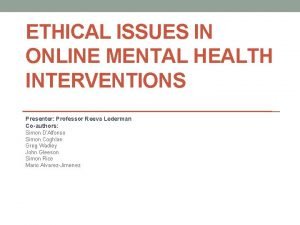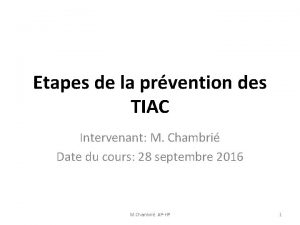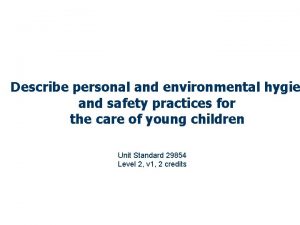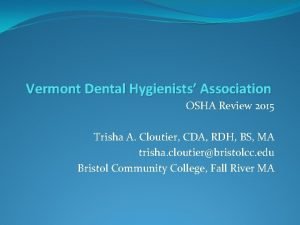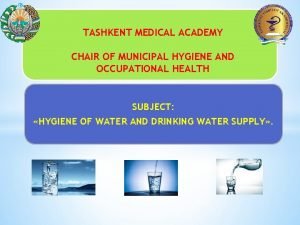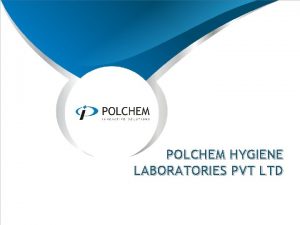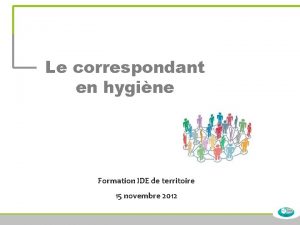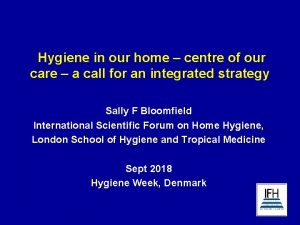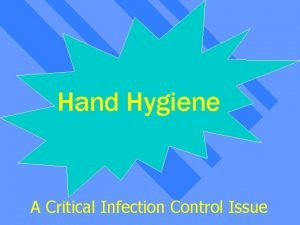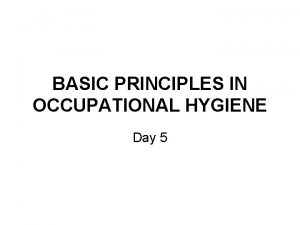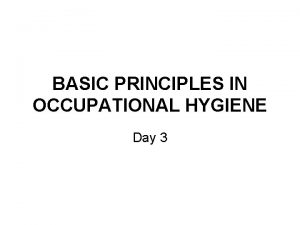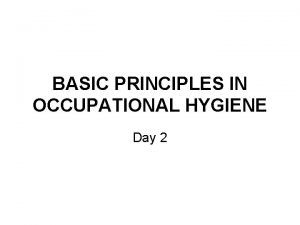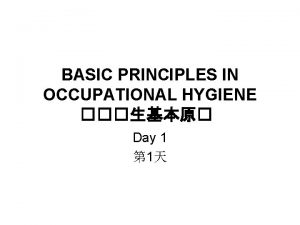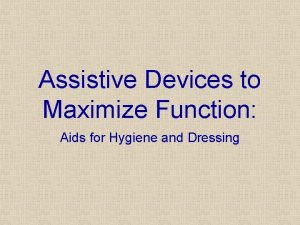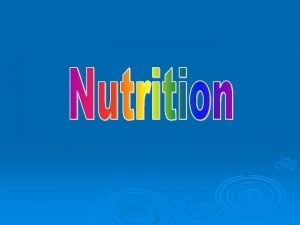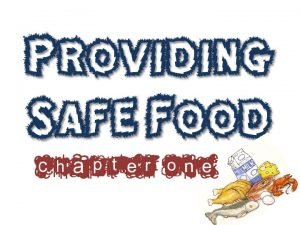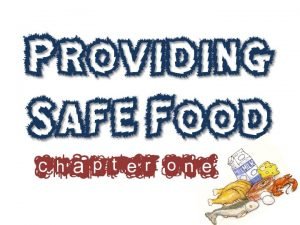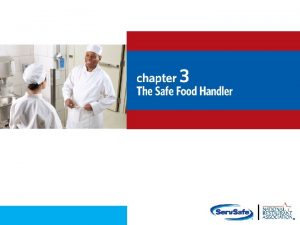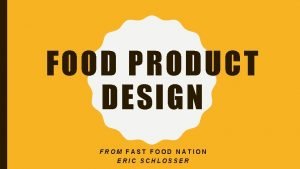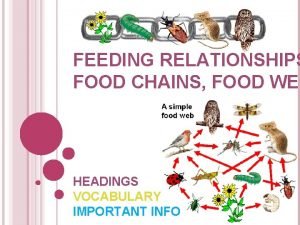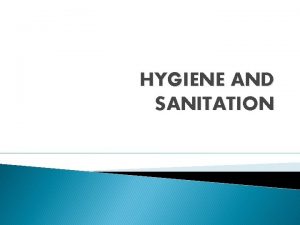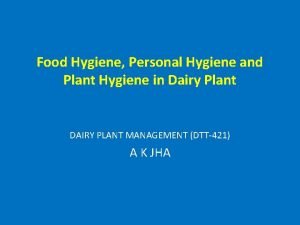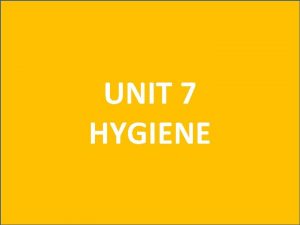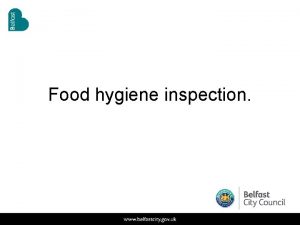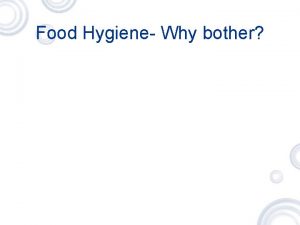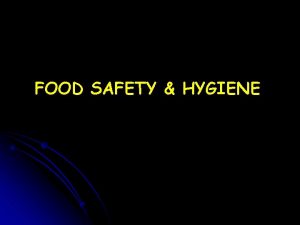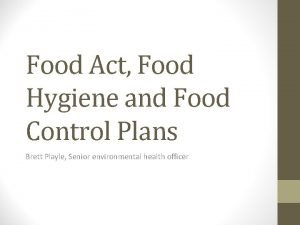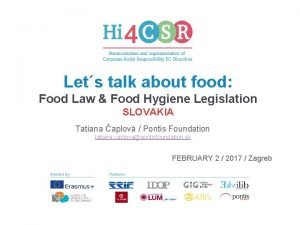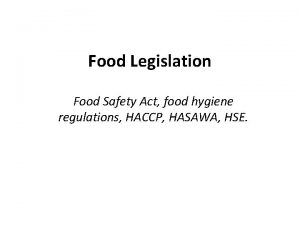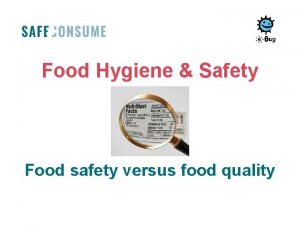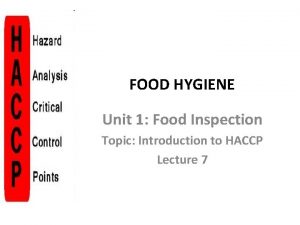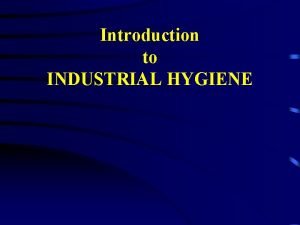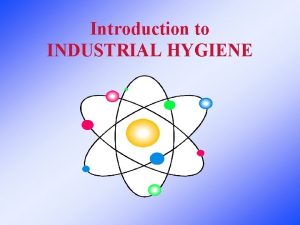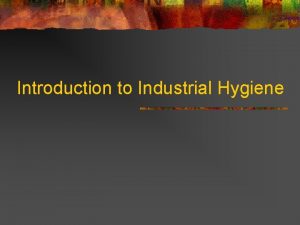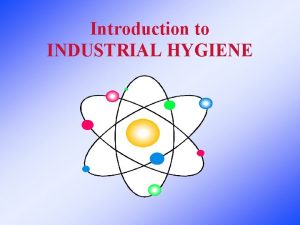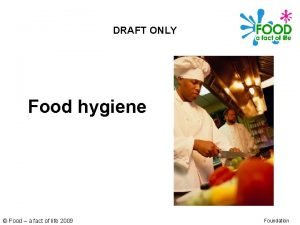A Question of Food Hygiene Introduction Whats the


























































































































































































- Slides: 186

A Question of Food Hygiene

Introduction – What’s the problem? Question 1 l l Name 3 groups of people who are likely to be very ill as a result of food poisoning? The very young The elderly People who are already ill Pregnant women

Introduction – What’s the problem? Question 2 l l l List 5 of the main faults resulting in food poisoning outbreaks Undercooking Cross-contamination from raw to high risk food Infected food handlers Hot food stored below 63°C Leftovers not reheated to correct temperature

Introduction – What’s the problem? Question 3 l l l What are the 3 main hazards involving food poisoning bacteria? Contamination of food by bacteria Storage of food at wrong temperature Poor cooking

Introduction – What’s the problem? Question 4 State 3 benefits of GOOD food hygiene l Satisfied customers l Less food wastage l Good working conditions

Introduction – What’s the problem? Answer 5 J PROFITS B

Bacteria and other Enemies Question 7 l Which can cause serious illness? Pathogens

Bacteria and other Enemies Question 8 It means splitting in two or doubling in size. What is this process called? B I N A R Y F I S S I O N

Bacteria and other Enemies Question 9 How often can some food poisoning bacteria divide in the right conditions? Every 10 minutes

Bacteria and other Enemies Question 10 Is the following statement TRUE or FALSE? ‘Bacteria are too small to see with the naked eye. ’ True

Bacteria and other Enemies Question 11 What are the conditions bacteria need for growth? 1 Warmth 2 Food 3 Moisture 4 Time

Bacteria and other Enemies Question 12 Is the following statement TRUE or FALSE? ‘Bacteria are ONLY found on rats, mice and cockroaches’ False

Bacteria and other Enemies Question 13 Is the following statement TRUE or FALSE? ‘Contaminated food always smells, looks and tastes bad’ False

Bacteria and other Enemies Question 14 Is the following statement TRUE or FALSE? ‘Raw foods are always HIGH-RISK foods’ False

Bacteria and other Enemies Question 15 l l l Name 5 high-risk foods: Cooked meat and poultry Cooked meat products Milk, cream, eggs and products made from raw eggs e. g. mayonnaise, mousses, quiche Shellfish Cooked rice

Bacteria and other Enemies Question 16 a Name 3 different types of micro-organisms 1 Moulds 2 Viruses 3 Bacteria

Bacteria and other Enemies Question 16 b l Which type of bacteria cause food to perish and become unfit? Pathogens

Bacteria and other Enemies Question 17 l l l l Fill in the missing temperatures and shade in the DANGER ZONE on diagram in workbook Boiling temperature 100°C Cooking temperature 75°C Hot holding temperature 63°C Body temperature 37°C Chill temperature 1 to 4°C Freezer temperature -18°C Danger Zone 5 to 63°C

Bacteria and other Enemies Question 18 What is a toxin? l Poisons produced by food poisoning bacteria (pathogens)

Bacteria and other Enemies Question 19 What is a spore? l A resistant resting phase of bacteria protecting them against conditions such as high temperatures

Bacteria and other Enemies Question 20 l Given the right conditions how often can some food poisoning bacteria divide into two? 10 minutes

Bacteria and other Enemies Question 21 l How long does it take for some bacteria to increase from 1000 to 1, 000? 1 hour 40 minutes

Bacteria and other Enemies Question 22 Where should high-risk foods be stored? l In the fridge

Bacteria and other Enemies Question 23 l What happens to most food poisoning bacteria at temperatures below 5°C? Most will not grow (go asleep)

Bacteria and other Enemies Question 24 What happens to all bacteria in frozen food? l All stop growing (go asleep)

Bacteria and other Enemies Question 25 Is the following statement - true or false? ‘All bacteria produce spores’? False

Bacteria and other Enemies Question 25 Is the following statement - true or false? ‘Bacteria can multiply inside the spore’ False

Bacteria and other Enemies Question 25 Is the following statement - true or false? ‘Spores can survive high cooking temperatures’ True

Food Poisoning and Foodborne Disease Question 26 Describe what is meant by the following term Food poisoning An acute illness, usually with symptoms of diarrhoea, vomiting, nausea and stomach pain caused by eating contaminated food

Food Poisoning and Foodborne Disease Question 26 Describe what is meant by the following term onset period l Period between infection and the first signs of illness

Food Poisoning and Foodborne Disease Question 26 Describe what is meant by the following term Nausea l Feeling sick

Food Poisoning and Foodborne Disease Question 26 Describe what is meant by the following term l Symptoms Changes in bodily functions experienced by a person suffering from a specific illness

Food Poisoning and Foodborne Disease Question 27 List 3 causes of food poisoning 1 Bacteria or their toxins 2 Moulds 3 Chemicals / metals / poisonous plants / poisonous fish

Food Poisoning and Foodborne Disease Question 28 1 2 3 4 State 4 different foods which are common sources of food poisoning organisms Raw meat / raw poultry Raw milk / raw eggs Shellfish Cooked rice

Food Poisoning and Foodborne Disease Question 29 1 2 3 4 State 4 parts of the body where you are most likely to find bacteria Nose Mouth Skin Intestine

Food Poisoning and Foodborne Disease Question 30 Raw meat, raw milk, raw eggs and raw poultry are a source of which food poisoning bacteria? l. Salmonella

Food Poisoning and Foodborne Disease Question 31 Name 2 poisonous plants that could cause food poisoning 1 Toadstools 2 Undercooked kidney beans

Food Poisoning and Foodborne Disease Question 32 Name 2 types of metal that could cause food poisoning 1 Copper 2 Zinc

Food Poisoning and Foodborne Disease Question 33 Which bacteria is the commonest cause of diarrhoea? l. Campylobacter

Food Poisoning and Foodborne Disease Question 34 1 2 3 4 What are the 4 main symptoms of food poisoning? Stomach pain Diarrhoea Vomiting Nausea / fever

Food Poisoning and Foodborne Disease Question 35 Do viruses multiply in food? No

Food Poisoning and Foodborne Disease Question 36 Some foodborne disease bacteria can multiply in a refrigerator true (Listeria)

Food Poisoning and Foodborne Disease Question 37 Is the following statement TRUE or FALSE? ‘Foodborne disease organisms do not need to multiply in food to cause illness’ True

Food Poisoning and Foodborne Disease Answer 38 l See page 12 in food hygiene handbook

Food Poisoning and Foodborne Disease Question 39 Is the following statement TRUE or FALSE? ‘Animals and flies are a source of food poisoning bacteria’ True

Food Poisoning and Foodborne Disease Question 40 Is the following statement TRUE or FALSE? ‘Some food poisoning bacteria can affect the nervous system’ True

Food Poisoning and Foodborne Disease Question 41 Is the following statement TRUE or FALSE? ‘Sewage contamination of food can result in foodborne disease’ True

Food Poisoning Prevention Question 42 The food poisoning chain consists of 3 major hazards. Solve the crossword in workbook to reveal the answers.

Food Poisoning Prevention Answer 42 S MULTIPLICATION R V CONTAMINATION V A L

Food Poisoning Prevention Question 43 Food Poisoning can be prevented by: Protecting food from contamination by: 1 Buying food from approved suppliers 2 Training food handlers 3 Good hygiene 4 Separation of raw and high-risk foods 5 Effective cleaning and disinfection

Food Poisoning Prevention Question 44 1 2 3 Food Poisoning can be prevented by: Depriving food poisoning bacteria of their ideal growth conditions by: Storing food out of the danger zone Preparing food – in danger zone short time Cooling food quickly

Food Poisoning Prevention Question 45 Food Poisoning can be prevented by: Destroying food poisoning bacteria within food by: 1 Thorough cooking 2 Heat treatment such as canning, pasteurisation

Food Poisoning Prevention Question 46 What is the usual temperature for the centre of food to ensure that it is fully cooked and safe to eat? l Chicken displaying 75°C

Contamination Hazards Question 47 l Draw a circle around the 10 possible sources of food poisoning bacteria on cartoon

Contamination Hazards Question 48 There are 4 types of contamination of food: What are they?

Contamination Hazards Answer 48 M I PHYSICAL R O B CHEM ICAL O ALLERGENIC I C A L

Contamination Hazards Question 49 Give 4 examples of chemical hazards and 4 methods of controlling chemical hazards HAZARDS CONTROLS Food deliveries Use approved suppliers Chemical deliveries Keep separate from food deliveries Chemical storage Keep in a locked area Cleaning chemicals Don’t spray near food

Contamination Hazards Question 50 What is contamination? l The presence or introduction of a hazard

Contamination Hazards Question 51 State 6 foods which commonly contain allergens: 1 Peanuts 2 Milk 3 Shellfish 4 Eggs 5 Cereals (gluten) 6 Celery

Contamination Hazards Question 52 What should the food handler have done with the food before he started cleaning? l Covered it

Contamination Hazards Question 53 Study the diagram below. What does it show? Fill in the missing letters to reveal the answer. ROUTES OF CONTAMINATION

Contamination Hazards Question 54 What is the transfer of bacteria from contaminated (usually raw) foods to high-risk foods called? l. CROSS CONTAMINATION

Contamination Hazards Question 55 l l Contamination can take place both directly and indirectly. An example of DIRECT contamination would be raw meat touching cooked meat. Give 2 examples on INDIRECT contamination. Handling cooked meat then raw meat without washing hands Same board used for preparing raw and cooked meats without washing in between

Contamination Hazards Question 56 Fill in the missing letters to discover the most common physical contaminant found in food. H A I R

Contamination Hazards Question 57 What is a hazard? l Anything that may cause harm to the consumer

Contamination Hazards Question 58 List 10 common physical contaminants frequently found in food. 1 3 5 7 9 Hair Jewellery Pills Staples Cigarette ends 2 4 6 8 10 Nuts and bolts Pen tops Plasters Stones Drawing pins

HACCP Question 59 What are the principles of HACCP?

HACCP Answer 59 Identify the HAZARD

HACCP Answer 59 l Identify the CRITICAL CONTROL POINT

HACCP Answer 59 l Establish CRITICAL LIMITS

HACCP Answer 59 l Monitor the CONTROL MEASURES

HACCP Answer 59 l Establish CORRECTIVE ACTIONS

HACCP Answer 59 l Establish procedures for VERIFICATION

HACCP Answer 59 l l Establish DOCUMENTATION RECORD the system

HACCP Question 60 What do the initials HACCP stand for? l HAZARD ANALYSIS CRITICAL CONTROL POINT

HACCP Question 61 When should a HACCP system be reviewed? l If there any changes

Purchase and Storage of Food Question 62 1 2 3 4 5 Write down 5 checks to be made when food is delivered Freshness Temperature Colour Contamination Satisfactory packaging

Purchase and Storage of Food Question 63 What should you do if frozen food is delivered as it is thawing? 1 2 Reject the food Notify the supervisor and the supplier

Purchase and Storage of Food Question 64 1 2 3 Do you consider this person to be a ‘reputable supplier’? If not, why not? Raw meat and vegetables in together Man not wearing protective clothing Food not packaged / covered

Purchase and Storage of Food Question 65 Why is it important to keep delivery records? l If there is a food complaint or case of food poisoning, records can help trace the source

Purchase and Storage of Food Question 66 Where should potatoes be stored? l Potatoes should be stored in the dark to prevent sprouting or turning green

Purchase and Storage of Food Question 67 STORAGE Dry food stores should be …. . 1 Dry and clean 2 Cool 3 Well lit 4 Well ventilated 5 Free of PESTS

Purchase and Storage of Food Question 68 Where should vegetables be kept until used? On a vegetable rack in a suitable store

Purchase and Storage of Food Question 69 1 2 3 4 State 4 reasons why canned food may be rejected? If cans are blown If cans are badly dented If cans are rusted If cans are seam damaged

Purchase and Storage of Food Questions 70 -73 REFRIGERATORS l Check out the fridge and decide which is the correct shelf to store your food on

Purchase and Storage of Food Fresh cream cakes l Shelf A Raw chicken l Shelf D Lettuce l Shelf C Cooked meat l Shelf B

Purchase and Storage of Food Question 74 1 2 Why should you cool hot food before it is placed in the refrigerator? It would raise the temperature of the food being stored above 5°C It would cause condensation and then contamination

Purchase and Storage of Food Question 75 Before placing food in a refrigerator it should be allowed to cool but for how long? 90 minutes

Purchase and Storage of Food Question 76 1 2 3 Food in refrigerators should be covered to prevent …. . Drying out Cross-contamination Absorption of odour

Purchase and Storage of Food Question 77 l Why should raw food be kept separate from high-risk food? To prevent contamination of high-risk food with food-poisoning bacteria

Purchase and Storage of Food Question 78 Opened and part-used cans of food, especially acid food such as fruit, fruit juice or tomatoes, must not be left in the can and stored in the refrigerator as this may result in chemical contamination. What should you do with the contents of the can? l. Put in a suitable container, such as a plastic bowl, cover and place in the refrigerator

Purchase and Storage of Food Question 79 List 3 controls relating to chilled storage 1 Display temperature should be checked every time the fridge is used 2 Display temperature should be recorded at least twice a day 3 Raw food must be kept apart form high-risk food

Purchase and Storage of Food Question 80 What are three Cs for chilled food storage? Complete the crossword to reveal the answers C COOL V CLEAN R E D

Purchase and Storage of Food Question 81 l What training should staff receive on using the refrigerator? Instruction on correct use in relation to contamination and temperature control

Purchase and Storage of Food Question 82 What is recommended as a good cleaning agent for refrigerators? Bicarbonate of soda

Purchase and Storage of Food Question 83 What is the correct temperature for storing frozen food? -18°C

Purchase and Storage of Food Question 84 Pork, sausages, offal, fish, butter and soft cheese may be kept in a freezer at -18°C for a number of months but how many? 6 months

Purchase and Storage of Food Question 85 What is the recommended temperature for a refrigerator? 1°C - 4°C

Purchase and Storage of Food Question 86 In a freezer, food should not be stored - - - the load line ABOVE

Purchase and Storage of Food Question 87 1 2 3 If thawing a frozen chicken in a refrigerator, you must know ……………. . The temperature of the REFRIGERATOR The weight of the CHICKEN The TIME taken by a chicken of this weight to thaw

A Question of Food Safety Question 88 What is stock rotation? l Older food being used first

A Question of Food Safety Question 89 Why is it important? l To avoid spoilage of food

Preparation, Cooking & Serving Question 90 Which types of food should be checked throughout the day? l Short-life perishable foods stored in the fridge

Preparation, Cooking & Serving Question 91 Fill in the missing letters to complete this well -known rule associated with stock rotation: FIRST IN FIRST OUT

Preparation, Cooking & Serving Question 92 Look at ‘best-before’ dates and tick which can should be used first BB Feb. 2008

Preparation, Cooking & Serving Question 93 What are the main hazards associated with food preparation? l l Cross contamination Multiplication of bacteria

Preparation, Cooking & Serving Question 94 l l List 4 controls that should be used in food preparation Core cooking temperature of 75°C for 2 minutes Core cooking temperature of 82°C for reheating food Unused reheated food should be discarded Training given on hazards and controls

Preparation, Cooking & Serving Question 95 Cooking temperatures should reach at least ______ °C in the centre l 75°C

Preparation, Cooking & Serving Question 96 You can check the temperature by using a P__B_ TH_______E_ PROBE THERMOMETER

Preparation, Cooking & Serving Question 97 What are the hazards associated with the cooling of food? l l Multiplication of bacteria not killed during cooking Production of toxins

Preparation, Cooking & Serving Question 98 What should be used for tasting food? A _L___ ___0_ l A CLEAN SPOON

Preparation, Cooking & Serving Question 99 How can food be cooled down quickly? l In a blast chiller l In a ventilated cool room l Using iced water

Preparation, Cooking & Serving Question 100 List 4 controls used when serving food – – Use refrigerated buffets / display units Plates and utensils must be clean and dry Food should be pre-wrapped/covered Keep raw food/high-risk food separate

Preparation, Cooking & Serving Question 101 What is the minimum legal temperature for hot holding? • 63°C

Preparation, Cooking & Serving Question 102 List 4 signs of food spoilage: • • changes in texture e. g. dry or spongy slime/stickiness discolouration mould growth

Preparation, Cooking & Serving Question 103 List 4 things that accelerate (speed up) spoilage: • • Poor temperature control Inadequate packaging Rough handling Pest infestation

Preparation, Cooking & Serving Question 104 Why are foods preserved? • to prevent or delay spoilage

Personal Hygiene Question 105 Look at the food handlers in your workbook and circle 14 different hygiene faults l Class discussion

Personal Hygiene Question 106 Why must head covering be worn by food handlers? l To prevent hair and dandruff from contaminating food

Personal Hygiene Question 107 l l State 2 occasions when protective clothing should be removed When travelling to and from work During lunchtime sporting activities e. g. football

Personal Hygiene Question 108 l What is the main reason for food handlers to wash their hands? Hands are the main way of transferring food poisoning bacteria because they are in direct contact with food

Question 109 l l l Suggest 3 other things that a food handler may do that could result in food contamination from the mouth. Cough over food Taste food with an unwashed spoon Blow into glasses to polish them

Personal Hygiene Question 110 l l State 4 physical contaminants of food which may result from food handlers Hair Jewellery Nail varnish False fingernails

Personal Hygiene Question 111 l l l As the mouth may contain food poisoning bacteria, state 3 things food handlers should not do: Don’t pick or scratch nose Don’t cough or sneeze over food Don’t work with food if you have a bad cold or infection

Personal Hygiene Question 112 Fingernails should be: l l Short Clean

Personal Hygiene Question 113 Wash-hand basins must be provided with: l l l Warm water Liquid soap Nailbrush

Personal Hygiene Question 114 l l l Describe 5 occasions when you must always wash your hands: After visiting the toilet Before handling food In between handling raw food and ready-to-eat food After combing hair or touching face etc After handling waste food

Personal Hygiene Question 115 Why should cuts be covered? l To prevent contamination of food by harmful bacteria and blood

Personal Hygiene Question 116 l l l What are 3 important points about dressings used to cover cuts? Use a waterproof dressing Use a coloured dressing – usually blue Make sure cut is completely covered

Personal Hygiene Question 117 Brightly coloured (usually blue) dressings are recommended for use in food premises. Why? l Easy to see if they fall into food

Personal Hygiene Question 118 Is the following statement TRUE or FALSE? “You must wash your hands after visiting the toilet” TRUE

Personal Hygiene Question 119 Is the following statement TRUE or FALSE? “I don’t need to wash my hands after scratching my nose” FALSE

Personal Hygiene Question 120 l Look at the picture in your workbook and draw a circle around 3 potential contamination hazards Answer 120 l Class discussion

Personal Hygiene Question 121 l l Why should jewellery not be worn whilst handling food? Harbour dirt and bacteria Stones and small pieces of metal could end up in food

Personal Hygiene Question 122 l l A food handler MUST NOT handle food when suffering from: Diarrhoea Food-borne infection

Personal Hygiene Question 123 Where should outdoor clothing be kept? l In a separate area from food room unless stored in suitable lockers

Personal Hygiene Question 124 l l l List 6 ailments which should be reported to a supervisor Diarrhoea Vomiting Heavy colds Skin infections Ear or eye discharge Infected cuts

Personal Hygiene Question 125 List 4 properties of protective clothing l Clean and washable l Light coloured l Press-studs or velcro fastening l Should cover ordinary clothing

Personal hygiene Question 126 Why is protective clothing worn? l To protect food from contamination

Personal Hygiene Question 127 l Food handlers must be trained ………. . COMMENSURATE WITH THEIR WORK ACTIVITY

Premises and Equipment Question 128 Premises should be well l L I T and VENTILATED

Premises and Equipment Question 129 Workflow should be continuous from R A W material to F I N I S H E D product

Premises and Equipment Question 130 Separate areas should be provided for R A W and H I G H - R I S K foods

Premises and Equipment Question 131 What should be provided at wall/floor joints? COVING

Premises and Equipment Question 132 Walls should be SMOOTH and IMPERVIOUS

Premises and Equipment Question 133 Floors should be even, easy to C L E A N and ANTI–SLIP

Premises and Equipment Question 134 If windows are open they may need to be fitted with cleanable FLY SCREENS to stop pests entering food areas

Premises and Equipment Question 135 Food contact surfaces should be: l Smooth l Durable l Impervious l Non-toxic

Premises and Equipment Question 136 l l l State 3 reasons why this equipment is not suitable for use: Cracked spoon Badly designed fish slice Damaged knife

Premises and Equipment Question 137 Waste bins inside, 3 hygiene rules to remember: l l l Use bins with foot operated lids Empty regularly Thoroughly clean

Premises and Equipment Question 138 Refuse areas outside, 3 hygiene rules to remember: l l l Keep area clean and tidy Dustbins should have tight-fitting lids Dustbins should be impervious and durable

Food Pests and Control Question 139 What are Food Pests? l A food pest is an animal which lives in or on our food

Food Pests and Control Question 140 l l l Rearrange the jumbled letters to discover common food pests found in the food industry Rat Mouse Fly Wasp Pigeon Cockroach

Food Pests and Control Question 141 State 4 signs of pest infestation l Droppings from mice l Damaged packaging l Eggs from animals l Fur or Hair

Food Pests and Control Question 142 Why is it important to control pests? l To prevent spread of disease l To prevent contamination and waste of food l To prevent loss of custom and profit l To prevent loss of staff who do not want to work in infested premises

Food Pests and Control Question 143 l l l What should be done to reduce the risk of pest infestation? Premises and refuse areas are kept clean Food is always covered You “clean as you go” Food is not left outside Food is stored in pest proof containers

Food Pests and Control Question 144 Look at the kitchen. Can you spot where the pests are getting into the premises? Answer 144 l Class discussion

Cleaning and Disinfection Question 145 Effective CLEANING and DISIFECTION reduces the risk of : l Food Poisoning

Cleaning and Disinfection Question 146 What 3 types of energy are used in cleaning? CHEMICAL E PHYSICAL T

Cleaning and Disinfection Question 147 What is cleaning? l Cleaning involves the application of energy to a surface, to remove dirt and grease

Cleaning and Disinfection Question 148 Fill in the missing letters to complete this important cleaning rule CLEAN AS YOU GO

Cleaning and Disinfection Question 149 State 4 reasons for cleaning l To remove matter on which bacteria would grow l To allow disinfection of equipment and surfaces l To remove dirt and grease l To comply with the law

Cleaning and Disinfection Question 150 l l State 4 items of equipment that need cleaning and disinfecting throughout the day Brushes Cloths Buckets Sinks

Cleaning and Disinfection Question 151 Where should cleaning chemicals be stored? l Stored separately from food, preferably in lockable cupboards or stores

Cleaning and Disinfection Question 152 What is the first thing you should always do with a new or unfamiliar cleaning chemical? l READ THE LABEL

Cleaning and Disinfection Question 153 Which of the following statements is correct? Cleaning must be planned

Cleaning and Disinfection Question 154 l l l What should be included within a cleaning schedule what is to be cleaned the amount and type of chemical and equipment to be used who is to clean it when is it to be cleaned how is it to be cleaned who is responsible for checking it has been carried out correctly

Cleaning and Disinfection Question 155 What is the usual temperature of hot water used to disinfect? 82°C

Cleaning and Disinfection Question 156 What should you do before cleaning electrical equipment? l Switch off at mains

Cleaning and Disinfection Question 157 l l l Match the names of the cleaning agents to the description of what they do? Sanitizer – reduces bacteria to a safe level, removes dirt and grease Disinfectant - reduces bacteria to a safe level Detergent - removes grease and dirt

Cleaning and Disinfection Question 158 1. 2. 3. 4. 5. 6. What are the 6 stages of the cleaning procedure? Pre-clean Main clean Rinse Disinfection Final rinse Drying

Cleaning and Disinfection Question 159 What do chemical disinfectants need to make them work? l APPROPRIATE CONTACT TIME

A Question of Food Hygiene Question 160 What is the maximum fine for a serious hygiene offence? UNLIMITED

Food Hygiene Legislation Question 161 l l What can happen to a person found guilty of an offence? Fine of up to £ 5000 Up to two years imprisonment

Food Hygiene Legislation Question 162 Complete the following defence DUE DILIGENCE

Food Hygiene Legislation Question 163 l l Describe 4 different powers of authorized officers under food safety law Enter food premises at any reasonable time Provide guidance, advice & training Investigate food poisoning complaints Send informal letters

Food Hygiene Legislation Question 164 l l When can a food premises be closed immediately? Imminent risk to public health What notice would be used? Hygiene Emergency Prohibition Notice

Food Hygiene Legislation Question 165 Which of the following statements is correct? l Environmental health practitioners/officers can inspect food premises at any reasonable time

Food Hygiene Legislation Question 166 What temperature must reheated food be raised to? 82°C

Food Hygiene Legislation Question 167 What do the initials FSA stand for? l Food l Standards l Agency

Food Safety Management Question 168 State 3 types of record that should be maintained as part of a food safety management system l Cleaning schedule l A supplier’s list l Staff training records l A diary

Food Safety Management Question 169 l What is the main reason for implementing HACCP? To reduce the risk of food poisoning

Food Safety Management Question 170 l Circle 10 potential food safety faults l Teacher will discuss answers with you

Food Safety Management Question 171 l What type of defence may depend on the completion of accurate records? Due diligence (this involves taking reasonable care to ensure food safety)

Food Safety Management Question 172 l What is the legal requirement of food business operators with regard to HACCP? To implement a food safety management system

Food Safety Management Question 173 l What is Safer food, better business? A toolkit to help businesses set up and implement HACCP
 Basic introduction to food hygiene
Basic introduction to food hygiene Costas question
Costas question Food hygiene matters
Food hygiene matters Pengertian higiene
Pengertian higiene Food hygiene training in dubai
Food hygiene training in dubai Definition of food hygiene
Definition of food hygiene Food hygiene definition
Food hygiene definition Golden rule of stock rotation
Golden rule of stock rotation Unit 2 food food food
Unit 2 food food food Grazing food chain diagram
Grazing food chain diagram Questions without question words
Questions without question words Nudging probe questions
Nudging probe questions Contoh open question
Contoh open question Factor - isolating question
Factor - isolating question Change direct questions into indirect questions
Change direct questions into indirect questions Examples of compelling questions
Examples of compelling questions Examples of compelling questions
Examples of compelling questions Examples of testable questions
Examples of testable questions I am such a good swimmer question tag
I am such a good swimmer question tag Question tag rules
Question tag rules Hình ảnh bộ gõ cơ thể búng tay
Hình ảnh bộ gõ cơ thể búng tay Ng-html
Ng-html Bổ thể
Bổ thể Tỉ lệ cơ thể trẻ em
Tỉ lệ cơ thể trẻ em Gấu đi như thế nào
Gấu đi như thế nào Glasgow thang điểm
Glasgow thang điểm Chúa sống lại
Chúa sống lại Các môn thể thao bắt đầu bằng tiếng nhảy
Các môn thể thao bắt đầu bằng tiếng nhảy Thế nào là hệ số cao nhất
Thế nào là hệ số cao nhất Các châu lục và đại dương trên thế giới
Các châu lục và đại dương trên thế giới Công thức tính thế năng
Công thức tính thế năng Trời xanh đây là của chúng ta thể thơ
Trời xanh đây là của chúng ta thể thơ Cách giải mật thư tọa độ
Cách giải mật thư tọa độ Làm thế nào để 102-1=99
Làm thế nào để 102-1=99 độ dài liên kết
độ dài liên kết Các châu lục và đại dương trên thế giới
Các châu lục và đại dương trên thế giới Thơ thất ngôn tứ tuyệt đường luật
Thơ thất ngôn tứ tuyệt đường luật Quá trình desamine hóa có thể tạo ra
Quá trình desamine hóa có thể tạo ra Một số thể thơ truyền thống
Một số thể thơ truyền thống Cái miệng xinh xinh thế chỉ nói điều hay thôi
Cái miệng xinh xinh thế chỉ nói điều hay thôi Vẽ hình chiếu vuông góc của vật thể sau
Vẽ hình chiếu vuông góc của vật thể sau Nguyên nhân của sự mỏi cơ sinh 8
Nguyên nhân của sự mỏi cơ sinh 8 đặc điểm cơ thể của người tối cổ
đặc điểm cơ thể của người tối cổ Thứ tự các dấu thăng giáng ở hóa biểu
Thứ tự các dấu thăng giáng ở hóa biểu Vẽ hình chiếu đứng bằng cạnh của vật thể
Vẽ hình chiếu đứng bằng cạnh của vật thể Vẽ hình chiếu vuông góc của vật thể sau
Vẽ hình chiếu vuông góc của vật thể sau Thẻ vin
Thẻ vin đại từ thay thế
đại từ thay thế điện thế nghỉ
điện thế nghỉ Tư thế ngồi viết
Tư thế ngồi viết Diễn thế sinh thái là
Diễn thế sinh thái là Các loại đột biến cấu trúc nhiễm sắc thể
Các loại đột biến cấu trúc nhiễm sắc thể Thế nào là số nguyên tố
Thế nào là số nguyên tố Tư thế ngồi viết
Tư thế ngồi viết Lời thề hippocrates
Lời thề hippocrates Thiếu nhi thế giới liên hoan
Thiếu nhi thế giới liên hoan ưu thế lai là gì
ưu thế lai là gì Sự nuôi và dạy con của hươu
Sự nuôi và dạy con của hươu Sự nuôi và dạy con của hươu
Sự nuôi và dạy con của hươu Hệ hô hấp
Hệ hô hấp Từ ngữ thể hiện lòng nhân hậu
Từ ngữ thể hiện lòng nhân hậu Thế nào là mạng điện lắp đặt kiểu nổi
Thế nào là mạng điện lắp đặt kiểu nổi Whats hot whats not
Whats hot whats not Chapter 9 making healthy food choices review answers
Chapter 9 making healthy food choices review answers What is your favorite meal answer
What is your favorite meal answer Savanna food chain
Savanna food chain Whats a food web
Whats a food web Whats the pure food and drug act
Whats the pure food and drug act Introduction answer the question
Introduction answer the question Question introduction example
Question introduction example Introductory paragraph meaning
Introductory paragraph meaning Example of introduction paragraph
Example of introduction paragraph Four moments of hand hygiene
Four moments of hand hygiene Wisconsin state lab of hygiene
Wisconsin state lab of hygiene Sanitation and hygiene
Sanitation and hygiene Sanitation and hygiene
Sanitation and hygiene Reproductive system function
Reproductive system function Verborgen regelovertreding
Verborgen regelovertreding Jelaskan pengertian resiko hygiene
Jelaskan pengertian resiko hygiene Conclusion on hygiene
Conclusion on hygiene Personal hygiene jeopardy
Personal hygiene jeopardy Importance of personal grooming
Importance of personal grooming Pacific university dental hygiene
Pacific university dental hygiene Joint commission tst hand hygiene
Joint commission tst hand hygiene Instrumentenaufbereitung in der zahnarztpraxis
Instrumentenaufbereitung in der zahnarztpraxis Pen grasp
Pen grasp Occupational hygiene risk assessment
Occupational hygiene risk assessment Personal hygiene in catering
Personal hygiene in catering Kitchen hygiene rules
Kitchen hygiene rules Objectives of hygiene promotion
Objectives of hygiene promotion Hygiene fundamentals of nursing
Hygiene fundamentals of nursing Demarche haccp
Demarche haccp Who definition of health education
Who definition of health education Objective of hand hygiene
Objective of hand hygiene Hexachloraphene
Hexachloraphene Hygiène et sécurité en restauration collective
Hygiène et sécurité en restauration collective Follow workplace hygiene procedures
Follow workplace hygiene procedures Précautions standard hygiène
Précautions standard hygiène Dentalelle
Dentalelle Workplace hygiene procedures
Workplace hygiene procedures Chapter 22 personal hygiene
Chapter 22 personal hygiene 4 moments of hand hygiene canada
4 moments of hand hygiene canada Four moments of hand hygiene
Four moments of hand hygiene Maine dental hygiene association
Maine dental hygiene association Faith moyo
Faith moyo Institut d'hygiène et sécurité industrielle batna
Institut d'hygiène et sécurité industrielle batna Poster sanitasi makanan
Poster sanitasi makanan Verwachtingstheorie
Verwachtingstheorie Wolf
Wolf Loyal hygiene solutions
Loyal hygiene solutions Tools of hygiene promotion
Tools of hygiene promotion Elizabethan toilets
Elizabethan toilets 5 moments of hand hygiene quiz
5 moments of hand hygiene quiz Summary of hand hygiene
Summary of hand hygiene Cdc hand hygiene training
Cdc hand hygiene training Ethical dilemma examples in dental hygiene
Ethical dilemma examples in dental hygiene These 17 hygiene
These 17 hygiene Moment 4 hand hygiene
Moment 4 hand hygiene Personal hygiene objectives
Personal hygiene objectives Personal hygiene definition
Personal hygiene definition Personal hygiene in physical education
Personal hygiene in physical education Occupational hygiene programme template
Occupational hygiene programme template Industrial hygiene procedure
Industrial hygiene procedure Hygiène vestimentaire de la femme enceinte
Hygiène vestimentaire de la femme enceinte Fundamentals of industrial hygiene
Fundamentals of industrial hygiene Importance of sanitation
Importance of sanitation Nasceducation
Nasceducation Define ergonomics milady
Define ergonomics milady Environmental science unit 1 lesson 8
Environmental science unit 1 lesson 8 Elizabethan era hygiene
Elizabethan era hygiene Dental scheduling templates
Dental scheduling templates Poultry hygiene and sanitation
Poultry hygiene and sanitation Meat hygiene definition
Meat hygiene definition Personal hygiene
Personal hygiene Hand hygiene competency
Hand hygiene competency Gbmc warm line
Gbmc warm line Dutchess county behavioral and community health
Dutchess county behavioral and community health Sanitation and hygiene
Sanitation and hygiene 7 précautions standard
7 précautions standard Cscc hesi
Cscc hesi Gmp sanitation and hygiene
Gmp sanitation and hygiene Gmp sanitation and hygiene
Gmp sanitation and hygiene Gmp sanitation and hygiene
Gmp sanitation and hygiene Basic principles of occupational hygiene
Basic principles of occupational hygiene Aeh zentrum für arbeitsmedizin ergonomie und hygiene ag
Aeh zentrum für arbeitsmedizin ergonomie und hygiene ag Clothes hygiene
Clothes hygiene Whatispersonalhygiene
Whatispersonalhygiene Define health illness continuum
Define health illness continuum Delayed type hypersensitivity reactions
Delayed type hypersensitivity reactions Selfawa
Selfawa Poultry meat hygiene and inspection
Poultry meat hygiene and inspection Hygiene in puberty
Hygiene in puberty Who hand hygiene moments
Who hand hygiene moments Maryland board of dental examiners
Maryland board of dental examiners Cahier hygiène et sécurité
Cahier hygiène et sécurité Body clean
Body clean Hygiène vestimentaire et corporelle
Hygiène vestimentaire et corporelle Keeping yourself clean
Keeping yourself clean Specific objectives of personal hygiene
Specific objectives of personal hygiene Hygiène de vie
Hygiène de vie Conclusion of mental hygiene
Conclusion of mental hygiene Hygiène vestimentaire et corporelle
Hygiène vestimentaire et corporelle What is personal and environmental hygiene
What is personal and environmental hygiene Vermont dental hygiene association
Vermont dental hygiene association Municipal hygiene
Municipal hygiene Laboratories
Laboratories îformation
îformation Military hygiene
Military hygiene Breaking the chain of infection
Breaking the chain of infection Herzberg 2 faktor teori
Herzberg 2 faktor teori Hand hygiene
Hand hygiene Principles of occupational hygiene
Principles of occupational hygiene Basic principles of occupational hygiene
Basic principles of occupational hygiene Basic principles of occupational hygiene
Basic principles of occupational hygiene Basic principles of occupational hygiene
Basic principles of occupational hygiene Personal hygiene assistive devices
Personal hygiene assistive devices Ouhsc dental hygiene
Ouhsc dental hygiene Food scientist measure food energy in
Food scientist measure food energy in Tcs food
Tcs food Which food is a tcs food
Which food is a tcs food Few food or little food
Few food or little food Energy pyramid
Energy pyramid Food handlers can contaminate food when they answer
Food handlers can contaminate food when they answer Food product design
Food product design Ladybug food chain
Ladybug food chain Tertiary food web
Tertiary food web How does the food chain go
How does the food chain go
